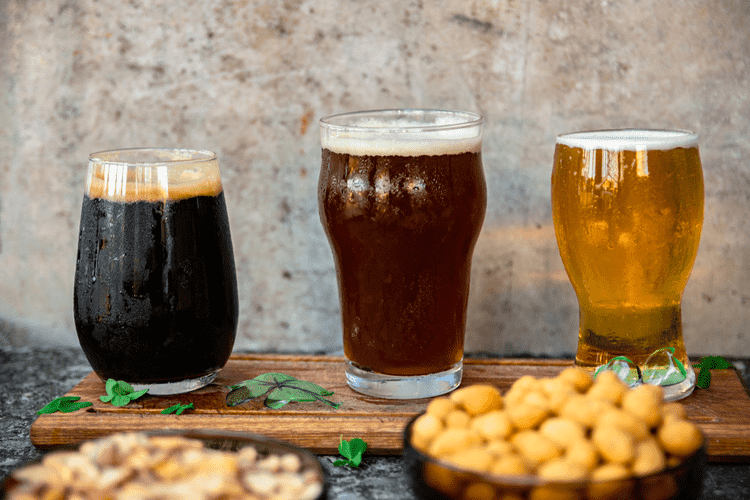It can remind you of vinegar or stale fruit, especially if they’ve been drinking heavily or haven’t practiced good hygiene lately. Understanding these cultural associations is essential, as they influence how people react to alcohol https://cbckuwait.com/alcohol-in-essential-tremor-and-other-movement-2/ use and its effects on individuals and communities. Alcohol sweat evokes a complex web of emotional and cultural associations that can shape perceptions and reactions.
Table of Content
You should also follow all of your doctor’s recommendations to ensure proper nutrition and recovery. If you are diagnosed with alcoholic ketoacidosis, your recovery will depend on a number of factors. Seeking help as soon as symptoms arise reduces your chances of serious complications. Treatment for alcohol addiction is also necessary to prevent a relapse of alcoholic ketoacidosis. Instead, it’s often linked to changes in the body due to diabetes-related conditions. Let’s break it down in simple terms and explore the possible causes, prevention tips, and when to seek medical help.
- A dry mouth reduces the natural production of saliva, and without saliva keeping your mouth clean of the bacteria that cause bad breath, the issue can worsen.
- Knowing about DKA and being able to recognize its symptoms can save a person’s life.
- One of the tests performed is a urine test to check for ketones present, which could indicate AKA.
- Alcoholic ketoacidosis doesn’t occur more often in any particular race or sex.
The Recovery Village cherry Hill at Cooper
The anion-gap is elevated, as mentioned above, because ketones are unmeasured anions. Leukocytosis may indicate an infectious pathology as the trigger and cultures are sent from blood, urine, or other samples as clinically indicated. Serum sodium is usually relatively low because of shifts of solvent (water) from the intracellular to extracellular spaces because of the osmotic pull of hyperglycemia. Hence, normal or elevated serum sodium is indicative of severe volume depletion.
Alcoholic Ketoacidosis Smell: Uncovering Causes and Solutions for Recovery
The diabetic nurse should follow all outpatients to ensure medication compliance, followup with clinicians, and adopting a positive lifestyle. Further, the nurse should teach the patient how to monitor home blood glucose and the importance of careful monitoring of blood sugars during infection, stress, or trauma. The physical therapist should be involved in educating the patient on exercise and the importance of maintaining healthy body weight. In extremes of starvation, after the exhaustion of the free glucose and after that, the body’s glycogen reserves, fatty acids become the primary fuel source. After several days of fasting, protein catabolism starts, and muscles are broken down, releasing amino acids and lactate into the bloodstream, which can be converted into glucose by the liver.
What to Expect in Residential Treatment at Gateway Foundation
If you notice a change in personal hygiene such as an excess of cologne or scented lotions, it may be an attempt to cover up the smell of alcohol through their sweat and body odor. Perhaps the easiest way to identify when someone has been drinking alcohol is if they drink common beverages like beer and wine. However, this can often be hard to pinpoint as alcohol abuse because so many people consume beer and wine socially. Understanding what makes someone addicted to alcohol can be the first step in helping a person seek treatment.

Clinical Assessment and Diagnosis of Alcoholic Ketoacidosis
- Alcoholic ketoacidosis is distinct from diabetic ketoacidosis (DKA) as it doesn’t necessitate diabetes and isn’t synonymous with high blood glucose levels.
- As ketones accumulate in the bloodstream, the person’s breath starts to give off an odor of alcohol.
- Normally, your body gets its energy from glucose, but when glucose levels drop and glycogen stores in the liver are low, the body burns stored fat for fuel instead.
When your liver struggles to detoxify, toxins accumulate, leading to unusual smells. Conditions like cirrhosis or liver failure often produce musty or ammonia-like odors you might notice. These reactions highlight the societal impacts of alcohol misuse, as discussions about alcoholic body odor often lead to deeper conversations about mental health and community wellbeing.
Diagnosis and Testing

Ethyl alcohol oxidizes at a rate of 20 to 25 mg/dL per hour in most individuals. The accompanying lack of alcohol in the patient’s body and the fact that for some time, the only source of Sober living home calories that a patient has is ethanol both contribute to the clinical syndrome that we see. When you drink alcohol, your armpits can sweat more, leading to stronger odors. Dehydration and bacterial growth may intensify the smell, making personal hygiene harder to maintain and potentially causing discomfort for you and others.
What are other causes of acetone-like breath?
For starvation ketosis, mild ketosis generally develops after a 12- to 14-hour fast. It can be seen in cachexia due to underlying malignancy, patients with postoperative or alcoholic ketoacidosis smell post-radiation dysphagia, and prolonged poor oral intake. It’s possible for others to detect alcohol on someone’s breath or clothing if you’ve consumed a moderate to a high amount of alcohol. Some common signs may include slurred speech, unusual behavior, bloodshot eyes, and a strong odor of alcohol on their breath, clothing, or skin. In some cases, people may also use cologne or perfume to hide the scent of alcohol, so it’s not always a reliable indicator.
